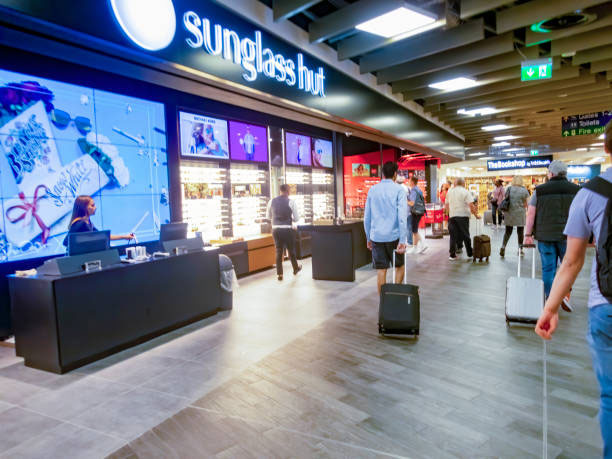
Types of Projectors
DLP Projectors (Digital Light Processing):
Description: DLP projectors use microscopic mirrors to reflect light and create images. They are popular for their sharp image quality and compact size.Pros:
High contrast ratios and good color accuracy.
Lightweight and portable.
Often more affordable than other types of projectors.
Cons:
Limited brightness in well-lit environments.
"Rainbow effect" (brief flashes of colors) can be noticeable for some viewers.
Use Case: Home theaters, classrooms, and smaller conference rooms.
LCD Projectors:
Description: Use liquid crystal display technology to project light through an LCD panel, creating bright and vibrant images.Pros:
Brighter images compared to DLP projectors.
No "rainbow effect," making it more comfortable for viewers.
Sharp and clear image quality.
Cons:
Bulkier than DLP projectors.
Lower contrast ratio compared to other types.
Use Case: Classrooms, conference rooms, and events requiring bright projections.
Laser Projectors:
Description: Use laser light sources instead of traditional bulbs, offering better color accuracy and brightness. Laser projectors are becoming popular for their longevity and superior performance.Pros:
Long lifespan and low maintenance.
Excellent brightness and contrast, even in well-lit rooms.
High image quality and accurate color representation.
Cons:
More expensive than traditional lamp projectors.
Use Case: Large venues, auditoriums, high-end home theaters, and corporate presentations.
Short Throw and Ultra Short Throw Projectors:
Description: These projectors can create a large image from a short distance, often mounted close to the screen or wall.Pros:
Ideal for small spaces.
Reduces shadows and glare caused by light paths.
Perfect for classrooms or interactive displays.
Cons:
Typically lower brightness and contrast compared to standard projectors.
Use Case: Classrooms, small conference rooms, and home theaters with limited space.
4K Projectors:
Description: Projectors capable of displaying content in 4K resolution (3840x2160 pixels), offering incredibly sharp and detailed images.Pros:
Extremely high resolution, perfect for displaying fine details.
Excellent for movies, sports, and presentations.
Cons:
Higher cost compared to 1080p projectors.
Use Case: Home theaters, high-end conference rooms, and art installations.
Large display screens and projectors are essential tools for displaying content to a large audience, and they are widely used in various environments such as classrooms, conference rooms, theaters, houses of worship, and events. Each technology has its advantages, depending on the use case, space, and content presentation needs.
Types of Large Display Screens
LCD/LED Displays:
Description: These are the most common types of large displays, available in sizes ranging from 40 inches to over 100 inches. LED (Light Emitting Diode) displays are a subcategory of LCD (Liquid Crystal Display) technology, where LEDs are used as a backlight for improved brightness and energy efficiency.Pros:
Excellent brightness and contrast.
Long lifespan.
Thin and sleek design, ideal for modern interiors.
Available in high resolution, up to 8K.
Cons:
Fixed size, so larger displays can be expensive.
May require more displays for ultra-large applications.
Use Case: Conference rooms, classrooms, digital signage, living rooms, and control rooms.
OLED Displays:
Description: OLED (Organic Light Emitting Diode) screens differ from LED displays by emitting light from each pixel independently, which results in deeper blacks and more vibrant colors.Pros:
Superior image quality with excellent contrast and color accuracy.
Thin and flexible designs.
Energy-efficient when displaying dark content.
Cons:
Higher cost compared to LED/LCD.
Potential burn-in issues with static images.
Use Case: High-end home theaters, creative studios, and luxury conference rooms where image quality is paramount.
Video Walls:
Description: Composed of multiple smaller display panels (LED or LCD) arranged to form a single large screen. These are used for ultra-large displays where a single panel would not suffice.Pros:
Highly scalable, can create very large displays.
High brightness and resolution.
Flexible layout options, including curved or irregular shapes.
Cons:
Visible seams between panels, though some advanced systems minimize this.
More complex to install and maintain.
Use Case: Command centers, retail spaces, events, and stadiums.
Interactive Displays (Touchscreens):
Description: Large touchscreens that allow users to interact directly with the display, often used for collaboration, education, and presentations.Pros:
Interactive and intuitive for presentations and teamwork.
Built-in software for annotation and collaboration.
Cons:
More expensive than standard displays.
May require regular cleaning and calibration.
Use Case: Classrooms, corporate meeting rooms, interactive kiosks, and collaborative spaces.
Popular Brands:
- Display Screens: Samsung, LG, Sony, Panasonic, Vizio.
- Projectors: Epson, BenQ, Optoma, Sony, ViewSonic, LG.
Key Use Cases for Each:
- Display Screens: Ideal for spaces where high brightness, durability, and sleek design are needed. Examples include retail spaces, corporate lobbies, home theaters, and control rooms.
- Projectors: Suitable for large venues, classrooms, and home theaters where flexibility in screen size is important. Projectors are often chosen for affordability when a very large display is needed.
Both display screens and projectors have their strengths and can be selected based on the specific requirements of the space, budget, and desired image quality.
Comparison: Display Screens vs. Projectors
| Feature | Display Screens | Projectors |
|---|---|---|
| Brightness | Superior, works well in brightly lit rooms. | Some projectors struggle in bright environments. |
| Image Quality | Sharp with high resolution, excellent color accuracy. | Good quality, but may depend on the projector type. |
| Cost | Higher cost for very large sizes (e.g., 100 inches). | Typically more affordable for larger displays. |
| Portability | Limited (especially for larger screens). | Lightweight and portable models are available. |
| Screen Size | Fixed size, limited to the physical size of the screen. | Very flexible, can project on any large surface. |
| Installation | Permanent installation, wall-mounting or stands. | Easy setup, with options for temporary installations. |
| Maintenance | Minimal (cleaning, occasional calibration). | Regular lamp/bulb or laser maintenance for some models. |

